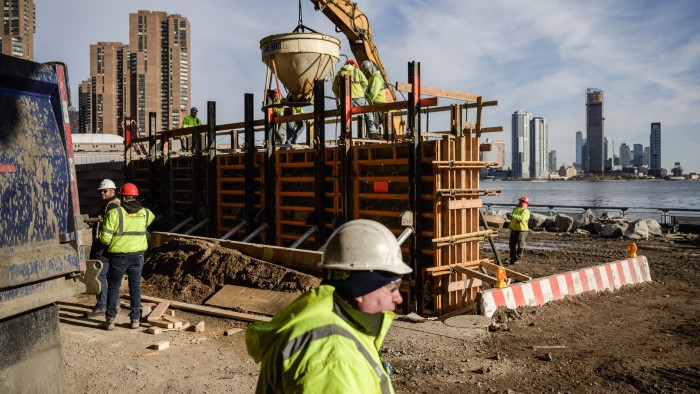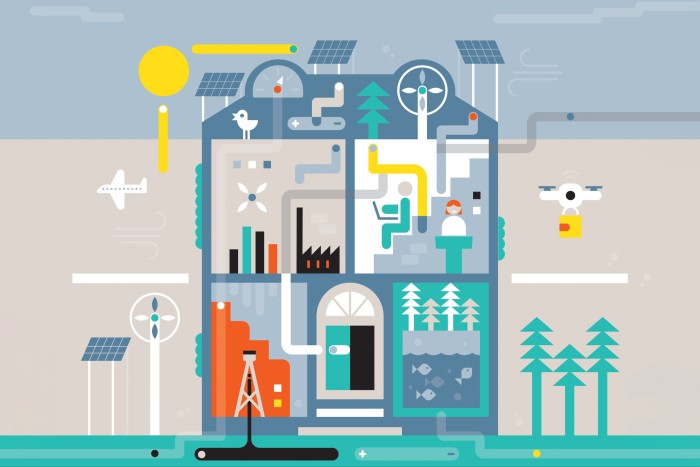Why it’s time to prepare for the worst on climate change

Simply sign up to the Business education myFT Digest -- delivered directly to your inbox.
Robert Pindyck is the Bank of Tokyo-Mitsubishi Professor of Economics and Finance at the MIT Sloan School of Management. He is the author of ‘Climate Future: Averting and Adapting to Climate Change’ (Oxford University Press)
We cannot predict how extensive climate change will turn out to be over the coming decades, nor can we predict its economic and social impact. But we must be prepared for the worst, and begin to invest now in adaptation.
We must be realistic. First, it seems unlikely that we can prevent warming of 2C or even 3C — in part, because we are not doing much to reduce CO₂ emissions. Europe and the US have made reductions and unveiled policies to do more. But what matters is global emissions, and most other countries are doing very little.
Even optimistic projections show global emissions continuing to rise over the next decade before falling only gradually. CO₂ remains in the atmosphere for centuries so, even with reduced emissions today, the atmospheric CO₂ concentration will continue to rise, pushing temperatures up.
Second, we do not know what will happen to sea levels, hurricane frequency and intensity, and other measures of climate change, nor their impact on lost GDP, greater morbidity and mortality, and social disruption. We have no theory from economics, climate science or elsewhere to turn to, nor data to rely on. We have never witnessed the effects of such a temperature rise on an industrial economy.
FT Business School Insights: Sustainability

Research by leading professors, features and academic and business opinion. Read the report here
But that uncertainty does not mean we should wait until we learn more before spending money on emissions abatement. You don’t know if a hurricane, flood, or fire might damage your home, so you buy homeowners’ insurance. You don’t know if some day you will find yourself in hospital, so you need health coverage. Likewise, it makes sense to insure against a catastrophic outcome, through measures such as reducing emissions.
We must cut emissions, but we should do so as efficiently as possible. “Efficiently” means at lowest cost, and study after study has shown that the lowest-cost way to reduce emissions is by imposing a carbon tax. A carbon tax simply increases the cost of burning carbon so that it covers the resulting environmental damage.
Ideally, an international agreement could lead to a harmonised tax that all major polluting countries would agree to impose. And, because each government would collect the tax and spend the money as it sees fit, a harmonised tax could facilitate an international agreement. A carbon tax is much more efficient than subsidies for electric cars, solar panels and other similar technologies which essentially provide financial support for the rich.
But emissions reduction by itself is not sufficient. Even a substantial reduction is unlikely to be enough to prevent a significant rise in temperature. Therefore, we must begin now to invest in adaptation to climate change, in order to counter its possible impact.
Examples of adaptation include developing new heat- and drought-resistant hybrid crops, adopting policies to discourage building in flood-prone areas, and building sea walls and levees to prevent flooding.
Households, private firms and the government must all participate. For example, households can consider flood risk when choosing where to buy or build a home, landscape grading to divert rainwater, investing in sump pumps and drainage, and, when possible, installing efficient air conditioning systems.
For companies, adaptation creates numerous opportunities for investing in the development of new heat- and flood-resistant crops, developing more efficient and affordable air conditioning, and producing the pumps and drains that households will need to protect against flooding.
However, the biggest investments will involve governments. A federally funded study for a sea wall around southern Manhattan that would prevent flooding from a storm surge like the one that occurred during Hurricane Sandy in 2012 showed a projected cost of about $120bn. We need to repair and enhance existing levees in many exposed areas, as was done around New Orleans.
Governments must also invest in the capability to undertake solar geoengineering: injecting sulphur into the upper atmosphere to reduce the greenhouse effect of increased atmospheric CO₂. Solar geoengineering doesn’t reduce the build-up of CO₂ in the atmosphere but it does cut the warming effect of that build-up.
It is controversial because a growing atmospheric concentration of CO₂ can cause ocean acidification, possibly affecting fish and corals. Given these concerns, solar geoengineering would be a temporary and partial solution to the problem of global warming. But, if the climate outcome turns out to be catastrophic, it is a solution we may need to rely on, and now is the time to prepare for it.
We don’t know what our climate future will look like. We may be lucky and experience only moderate climate change with a limited economic and social impact. But we can’t count on luck. Now is the time to put more effort into efficient CO₂ emission reduction, and invest in adaptation to limit the impacts of climate change.
Climate Capital

Where climate change meets business, markets and politics. Explore the FT’s coverage here.
Are you curious about the FT’s environmental sustainability commitments? Find out more about our science-based targets here

Comments